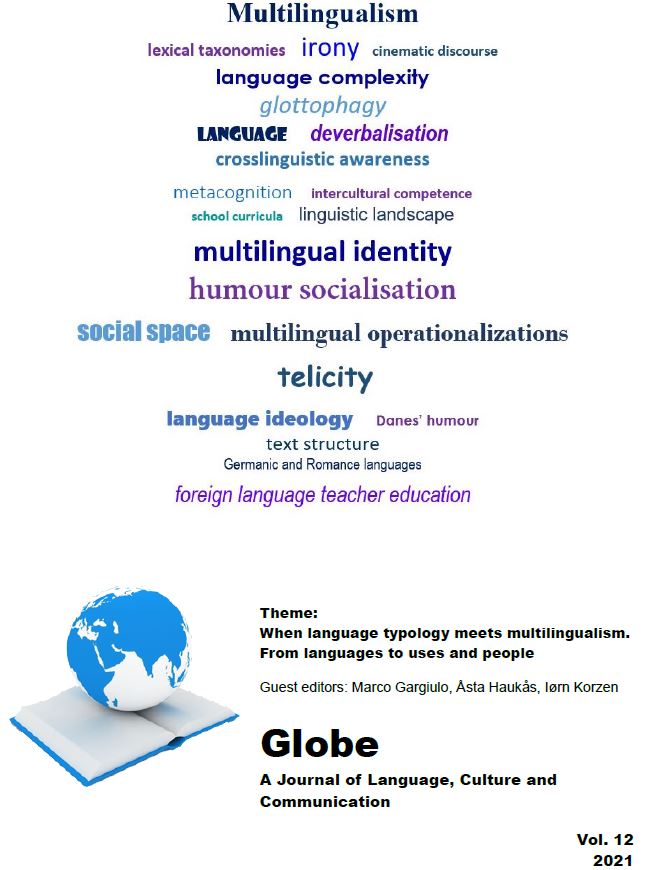Complementarity and division of labor between endo and exocentric languages. The case of Danish and Spanish
DOI:
https://doi.org/10.5278/ojs.globe.v12i.6495Abstract
This paper is based on comparative data on Danish and Spanish, and argues that systematic variations between the word formation (Müller 2013) and syntactic pat terns dominating these two languages correlate with deep rooted lexical differences between endocentric (Germanic) and exocentric (Romance) languages. The paper follows the lexical typological assumption that endo and exocentric languages complementarily distribute
semantic information on the two major word classes, nouns and verbs (e.g. Baron & Herslund 2005; Baron et al . 2019; Korzen 2016). Whereas the former concentrate information in the main verb and leave the nominal arguments underspecified, the latter act oppositely, that is, they tend to use general verbs (e.g. Herslund 2014; Müller 2014, 2019) and specific nouns. With respect to word formation, a consequence of the vagueness of endocentric nouns, and, thus, their hyperonymic level lexicalization, is that in order to designate entities at a hyponymic level, the Germanic languages tend to use the composition system. In contrast, exocentric nouns are already semantically saturated, so presumably the Romance languages have not developed a complete
system of morphological composition to tackle the task of creating lexical hierarchies. In these languages, either the sema ntic components are already encapsulated in the simple noun, or they use an alternative strategy, namely, derivation. Therefore, composition in the Romance languages has not generally been routinized as part of a morphological system, but has the status of a syntactic device, prototypically following the formative pattern [N prep. N]. As regards syntactic patterns, the high level of specificity of Danish verbs correlates with a structural flexibility that allows inherently intransitive, manner expressing ac tivity predicates of this language to be constructed telically. In contrast, the possibility of constructing telic variations of such predicates is
generally considered a rather marginal phenomenon in the Romance languages (e.g. Korzen 2003: 85 89 and refe rences therein).
Downloads
Published
Issue
Section
License
Articles published in Globe: A Journal of Language, Culture and Communication are following the license Creative Commons Attribution-NonCommercial-NoDerivs 3.0 Unported (CC BY-NC-ND 3.0). Authors retain copyright and grant the journal right of first publication with the work simultaneously licensed under a Creative Commons Attribution License: Attribution - NonCommercial - NoDerivs (by-nc-nd). Further information about Creative Commons


